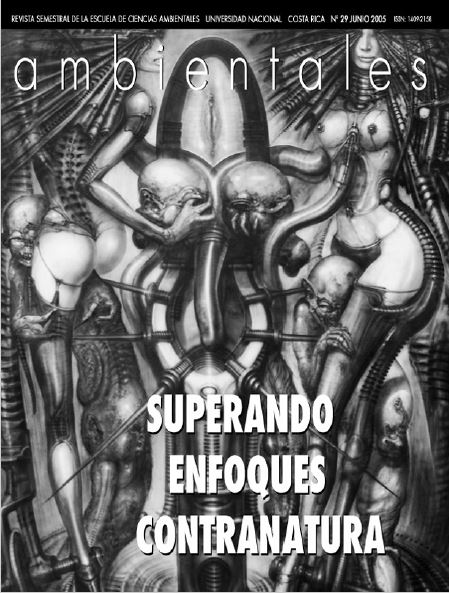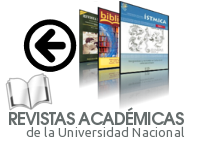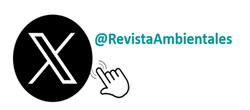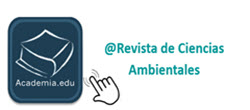Heavy Metal Pollution in Quebrada Azul Sediments
DOI:
https://doi.org/10.15359/rca.29-1.6Keywords:
Metales pesados, contaminaciónAbstract
Fluvial sediment samples were taken from Azul creek, which directly drains Rio Azul Sanitary Landfill and collects the main part of its leachate. The samples were tested by X ray fluorescence in order to determine the concentration of some heavy metals and to establish the levels of pollution of the sediments. Sediments fine fraction shows the highest concentrations of heavy metals, for that reason it can be considered as a guide and its use is suggested in this type of studies due to the important savings in time and resources hat can be reached. The Swedish Environmental Protection Agency has established the procedures used to determine the levels of pollution. Some findings include that there is no pollution due to copper, rubidium and strontium, pollution due to vanadium and manganese is moderate and the pollution due to zinc is serious. Lead and mercury are not reaching the superficial streams yet, they are been kept inside the limits of the landfill. With respect to cadmium, which was not detected due to the configuration of equipment, it could have a behavior very similar to zinc.
References
Ambrose, R. B. 1999. Partition Coefficients for Metals in Surface Water, Soil, and Waste. Draft. U.S. Environmental Protection Agency, Office of Solid Waste. Washington, DC.
ATSDR. 2001a. Toxicological Profile for Vanadium. Agency for Toxic Substances and Disease Registry. http://www.atsdr.cdc. gov/toxprofiles/tp58.html ATSDR. 2001b. Toxicological Profile for Zinc. Agency for Toxic Substances and Disease Registry. http://www.atsdr.cdc.gov/ tfacts60.html
CCME. “Canadian sediment quality guidelines for the protec-tion of aquatic life: Summary, tables”, en Canadian environ-mental quality guidelines, 1999. Canadian Council of Ministers of the Environment. Winnipeg.
Drever, J. I. 1982. The Geochemistry of Natural Waters. Prentice-Hall, Inc. Englewood Cliffs.
Emsley, J. 1999. The Elements. http://www.ch.cam.ac.uk/misc/ weii/index.html
Fetter, C. W. 1988. Applied Hidrogeology. Macmillan Publishing Company. New York.
Franco, A. 1977. Geología de la zona norte de Quebrada Honda, Patarrá, San José, Costa Rica. Campaña Geológica, Escuela Centroamericana de Geología, Universidad de Costa Rica.
IAS. 2001. Adsorption Phenomena. International Adsorption Society. http://ias.vub.ac.be/General/Adsoprtion.html
Kominar, R. J. 2001. Bioavailable Heavy Metal Sediment Loading In Laurel Creek. Department of Chemistry, Wilfrid Laurier University. Waterloo. http://www.adm.uwaterloo.ca/ infowast/watgreen/laurelcreek/17.html
Mantei, E. J. y E. J. Sappington. “Heavy metal concentrtions in sediments of streams affected by a sanitary landfill: A compari-son of metal enrichment in two size sediment fractions”, en Environmental Geology, 24, 1994.
Mantei, E. J. y M. V. Foster. “Heavy metals in stream sediments: Effects of human activities”, en Environmental Geology and Water Sciences, 18, 1991.
Mantei, E. J. y D. D. Coonrod. “Heavy metal content in the stream sediments adjacent to a sanitary landfill”, en Environmental Geology and Water Sciences, 13, 1989.
MFE. 2002. 8.4 ANZECC water quality guidelines. Sediment quality guidelines. Ministry for Environment. New Zealand. http://www.ea.gov.au/water/quality/nwqms/pubs/volume2-8-4.
Mora, R. y R. Mora. 2003. Contenido de metales pesados en los sedimentos de los ríos y quebradas adyacentes al Relleno de Río Azul, Río Azul, La Unión, Cartago, Costa Rica. Informe final de Proyecto de investigación Nº 113-A1-050, Escuela Centroamericana de Geología, Universidad de Costa Rica.
NCSU. 2001. Water, Soil, and Hydro-Environmental Decision Support System. NCSU Water Quality Group - North Carolina State University. http://h2osparc.wq.ncsu.edu/index.html.
PharmaPortal. 2001. Glossary. PharmaPortal.com. http://www. pharmaportal.com/glossary/index.cfm?alpha=D&termid=793 Schlomer, W. J. 2001. Heavy Metal Concentrations in Stream Sediments of the South Dry Sac River. http://courses.smsu.edu/ ejm893f/Geochem%20projects/Fullbright.htm.
Salazar, A. 2003. Comunicación personal.
Sepa. 2002. Assessment of Contamination Level. Assessment of current conditions. http://www.Swedish Environmental Protection Agency.htm.
Smolders, E. 2001. Determination of in situ distribution coef-ficient for simulation modelling of heavy metal mobility in contaminated soils. Research project 3E980442. Katholiéke Universiteit Leuven. http://www.kuleuven.ac.be
WHO. 1981. Environmental health criteria 17, Manganese. World Health Organization (WHO). Geneva. Swisstzerland. http://www.inchem.org/documents/ehc/ehc/ehc017.htm#SubS ectionNumber:1.1.2.
Wood, J. M. “Biological cycles for toxic elements in the envi-ronment”, en Science, v. 183, 1974.
Yu, C. et al. 1993. Data collection handbook to support mod-eling impacts of radioactive material in soil. Environmental Assessment and Information Sciences Division, Argonne National Laboratory, Argonne, Illinois. http://web.ead.anl.gov/ resrad/datacoll/dcall.htm
Downloads
Published
How to Cite
Issue
Section
License

This work is licensed under a Creative Commons Attribution-NonCommercial-ShareAlike 4.0 International License.



















